Introduction to Rug Making
Rug-making is an ancient craft that has transcended generations, evolving into an art form that combines traditional techniques with contemporary design today. This craft reflects cultural identities and artistic expressions, from the various patterns of Persian carpets to the casual warmth of woven area rugs. In recent years, the resurgence of interest in handmade crafts has revived rug making as a hobby and potential financial endeavour, inviting individuals to explore how to make a rug while also considering the market’s profitability.
Tips to Note Before Starting
The materials required for rug making can vary significantly, ranging from natural fibres like wool, cotton, and jute to synthetic options such as acrylic and polyester. Choosing the right material is essential for aesthetic appeal, durability, and maintenance. Each fibre type has properties influencing the rug’s texture, appearance, and longevity. Furthermore, the options for rug styles are vast, with different techniques such as tufting, weaving, and hooking allowing creators to tailor their pieces to specific preferences and functionalities.
Financial benefits
As interest in unique, handmade items grows, many are discovering the financial benefits of turning rug making into a profitable hobby or side business. Artisans can effectively showcase and sell their creations by leveraging online marketplaces, social media platforms, and craft fairs. The potential to make money through rug making encourages creativity and allows individuals to contribute to the handcrafted movement, emphasising quality and personalisation in an increasingly mass-produced world. Ultimately, for those exploring the craft, understanding how to make a rug becomes a gateway to self-expression and entrepreneurial opportunities.
Choosing the Right Materials
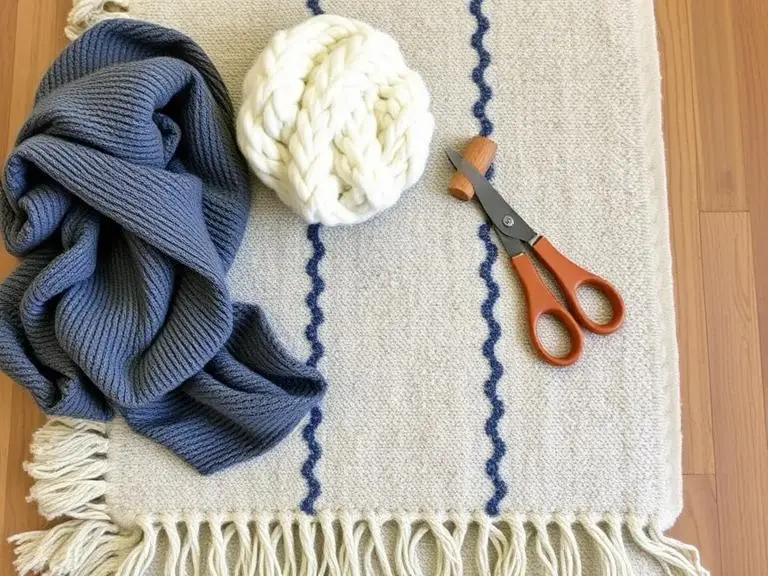
One crucial step in making a rug involves selecting the right materials. The choice of material can greatly affect the rug’s durability, aesthetics, and overall functionality. Various options are available, each with distinct characteristics, making it vital to know their properties and suitability for different rugs.
- Wool is among the most popular rug-making materials due to its natural resilience and warmth. It is celebrated for its ability to resist stains and repel moisture, making it an excellent choice for high-traffic areas. However, wool costs are generally higher than synthetic fibres, which can impact the overall budget. If you desire a high-quality, luxurious rug and are willing to invest, wool might be the best option.
- Cotton is another viable material, especially for beginners. It is affordable, easy to handle, and available in a broad range of colours, which can enhance creative possibilities. While cotton rugs are typically softer underfoot, they may not be as durable as wool ones, especially in furniture or foot traffic areas.
- Synthetic fibres, like nylon and polyester, are durable and often resistant to fading, making them suitable for outdoor rugs or playful indoor spaces. They are typically more cost-effective than their natural counterparts, making them an attractive option for those who want to make money by creating rugs at a lower initial investment.
- For eco-conscious creators, eco-friendly materials like jute and bamboo offer sustainable alternatives. These materials provide unique textures and patterns while promoting responsible sourcing practices. The choice of material should align with the intended use of the rug, desired aesthetics, and budget constraints, ensuring that your effort in making a rug results in a satisfying and successful product.
Essential Tools and Equipment for Rug Making
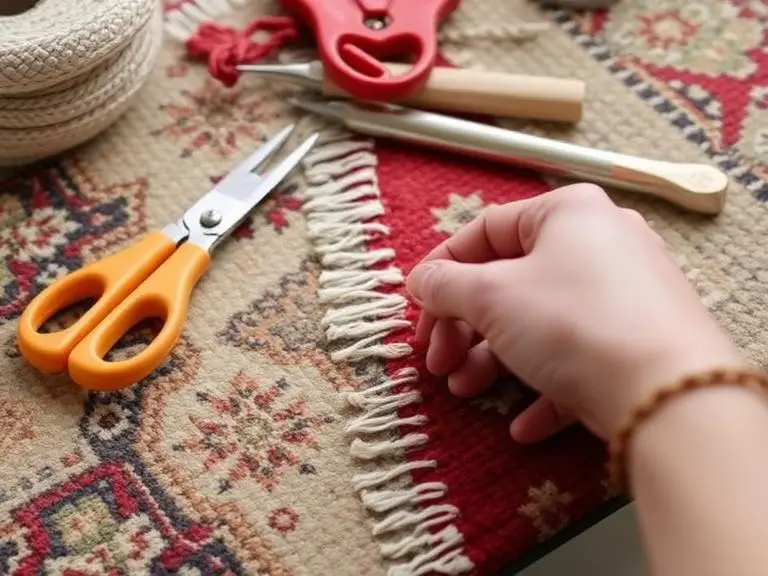
Having the right tools and equipment is crucial to achieving a quality product when embarking on the journey of rug making. The selection of tools can influence not only the efficiency of the work but also the outcome of the rug. Here, we will look into the essential tools that every rug maker should consider, ranging from basic hand tools to more advanced machinery.
- Weaving frame—This is one of the primary tools for any rug maker. This structure holds the yarn taut and provides stability while crafting intricate designs. Weaving frames come in various sizes and styles; smaller frames are ideal for beginners and small projects, while larger ones are suited for expansive patterns. Depending on the complexity of the rug, investing in a sturdy weaving frame can enhance the overall crafting experience.
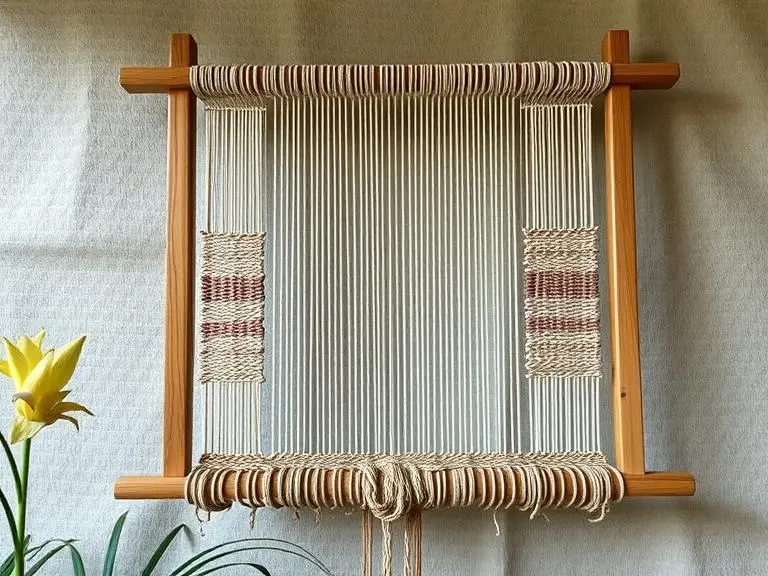
- Scissors– Next on the list is a quality pair of scissors. Accurate cuts are essential when working with yarn and fabric, and having sharp, reliable scissors can make a significant difference. An additional tool, such as a needle, is also necessary. Speciality needles are designed for rug making and vary based on the type of yarn used. Selecting the appropriate needle will help in weaving efficiently and effectively.
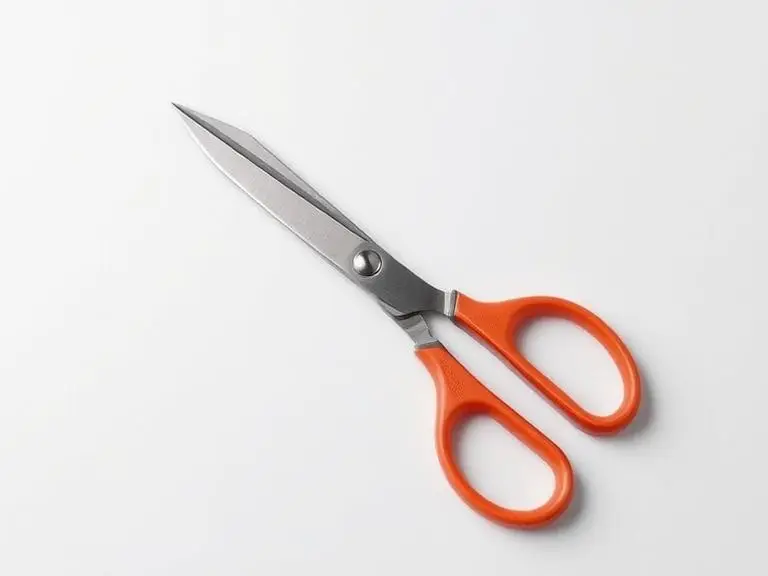
- Loom– A loom is vital for producing larger rugs or more complex designs. Looms come in various forms—table looms, floor looms, or even more compact options for limited spaces. Each type of loom serves different needs, and mastering a loom can enhance a maker’s ability to create various styles of rugs smoothly.
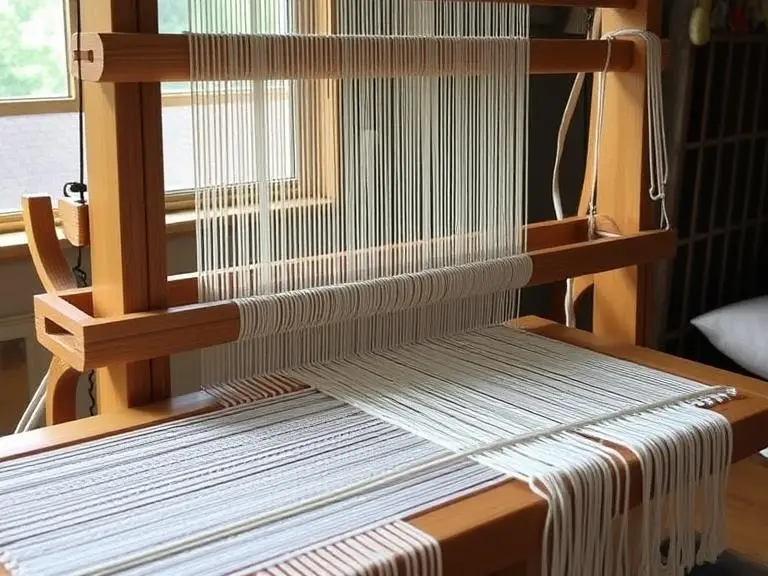
Investing in high-quality tools contributes to a successful rug-making process and extends the equipment’s lifespan. Thus, selections should be made thoughtfully. By equipping oneself with the right tools, aspiring rug makers can make beautiful rugs and explore opportunities to make money, whether by selling their creations or offering tutorials to others interested in creating a rug.
Basic Rug Making Techniques
Rug making is an art that combines creativity and skill. Understanding the fundamental techniques, such as weaving, tufting, and knotting, can significantly enhance your ability to create unique and marketable pieces. This section will delve into each of these methods, providing a step-by-step guide that facilitates the learning process for beginners.
1. Weaving
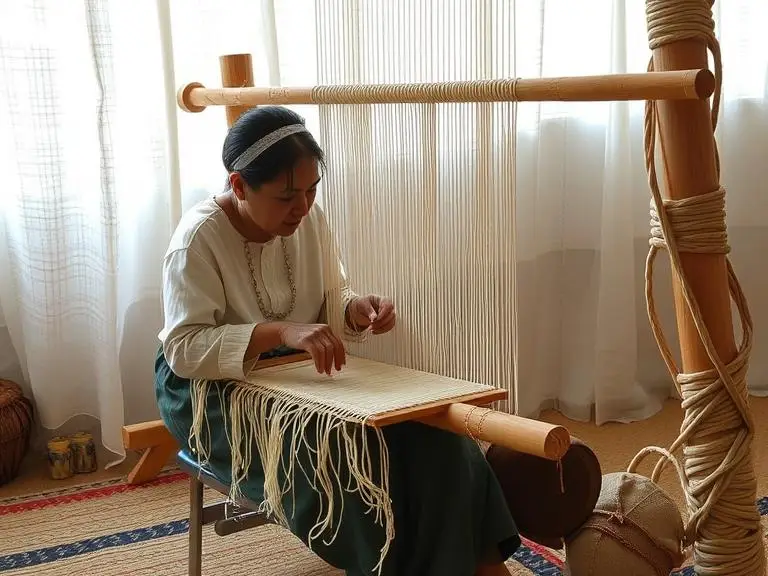
Weaving is one of the oldest rug-making techniques. To begin, you will need a loom, which can be bought or made at home using simple materials. Start by warping the loom with your selected yarn, ensuring it is taut and evenly spaced. Next, use a shuttle to weave your weft yarn through the warp threads. Alternate the direction for each row to build a sturdy structure. The beauty of weaving lies in the variety of patterns you can create, from simple stripes to intricate designs.
2. Tufting

Tufting is another popular method that allows for plush and textured rugs. To tuft, you will need a tufting gun and a primary backing material, such as burlap. Insert the yarn into the tufting gun and create loops in the backing material. The height and density of the loops will dictate the rug’s final texture. After tufting, a secondary backing is applied to secure the fibres and provide stability. This method is particularly suitable for beginners looking to create thick, inviting rugs that can also be sold at a profit. Check out Kramis’s tufting tutorials to understand more.
3. Knotting
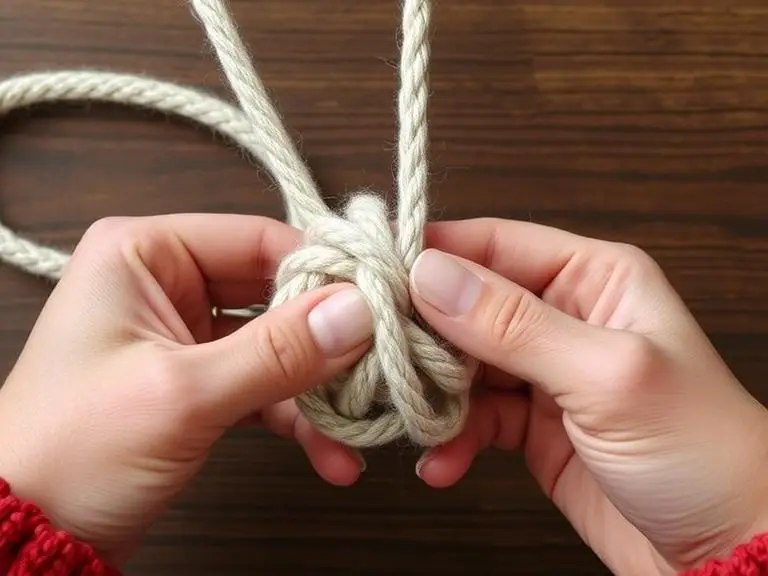
Knotting, particularly the Persian knot, adds artistic flair and intricacy to rugs. Start with foundation threads, then tie the yarn around these threads in various knots, creating patterns and images as you progress. This technique needs patience and precision, but is greatly rewarding when you see the final product emerge. Using natural dyes can enhance your creations, adding depth and character.
By mastering these basic techniques, you can discover how to make a rug that showcases your creativity and craftsmanship while providing opportunities to make money from your efforts. Visual aids and images accompanying each technique can serve as inspiration, making the process accessible and enjoyable for budding rug makers.
If you would prefer a video to learn all these techniques, I would recommend this video. The
Creating Unique Designs and Patterns
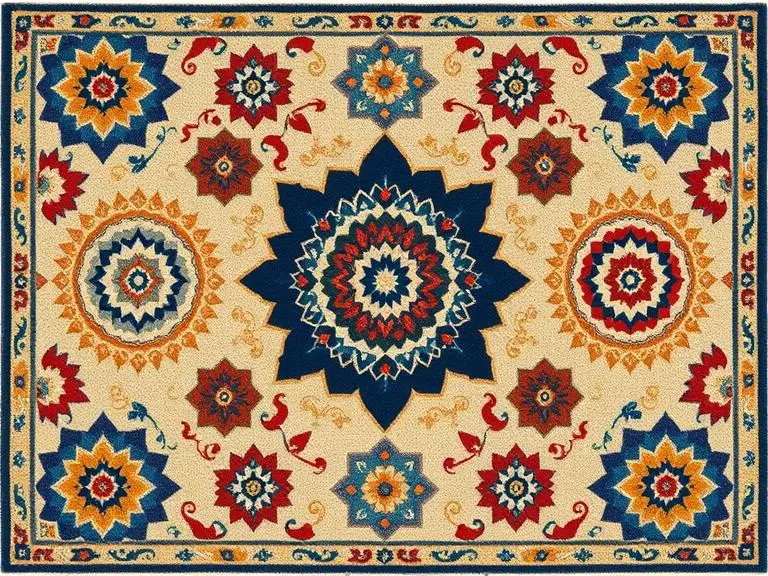
Design is crucial when making an aesthetic and functional rug. Design principles, including balance, contrast, repetition, and alignment, form the foundation for visually appealing patterns. Balance is the spreading of visual weight within a design, which can be symmetrical or asymmetrical, while contrast adds interest through varying colours and shapes.
- Colour theory plays an instrumental role in rug design, as well. Knowing the colour wheel and the relationships between colours can help you select hues that complement each other effectively. For instance, using complementary colours—opposite each other on the colour wheel—can create dynamic and striking designs. Additionally, considering the psychological effects of colours is essential; warm colours may kindle energy and warmth, while cool colours can lead to calmness and relaxation.
- Incorporating personal style into rug making is essential for producing unique designs. Drawing inspiration from various sources, such as nature, art, and culture, can lead to innovative patterns that resonate with your identity. For example, observing the natural patterns in leaves, flowers, or landscapes could inspire organic shapes for your rug. Artistic movements, like abstract or minimalist art, can also provide a fresh perspective on pattern creation.
- Using sketching techniques can facilitate the translation of your ideas into workable designs. Start by drafting a few rough sketches to explore different concepts and layouts. This visual exploration can help you refine your ideas further. If possible, gather images of successful rug designs that inspire you. Analysing them can provide insight into effective design strategies and techniques.
Ultimately, creating unique rug designs combines design, colour theory, and personal inspiration, allowing you to make rugs that not only showcase your creativity but also have the potential to make money. Such originality is essential in a competitive market where distinctive products draw customers.
Marketing Your Handmade Rugs
Making a Website
Successfully selling handmade rugs requires a well-structured marketing strategy to attract potential buyers and ensure profitability. First and foremost, building an online presence is immensely important. Make a website or blog showcasing your rugs, detailed descriptions, and high-quality photographs. Utilise search engine optimisation (SEO) strategies to help your site rank on search engines. This can include using keywords related to how to make a rug and different styles to connect with people searching for such products.
Use Social Media
Leveraging social media platforms is another effective means of marketing. Platforms like Instagram, Facebook, and Pinterest are ideal for visually appealing products like handmade rugs. You can make a loyal following by regularly posting attractive images, engaging stories, and informative content about your crafting process. Consider joining relevant groups or communities to share your work while connecting with potential customers and fellow artisans. Utilise hashtags related to your niche, including #HandmadeRugs, #RugMaking, and #ArtisanRugs, to enhance your visibility.
Set up an Etsy Shop
Setting up an Etsy shop specifically for handmade rugs can also significantly broaden your market reach. Etsy is a well-established platform particularly supportive of crafters and artists, allowing you to target customers specifically interested in personalised, unique home décor. Ensure that compelling product descriptions and competitive pricing are written to attract buyers. Participating in local craft fairs or artisan markets can help you reach a local audience and build brand recognition. Having a physical presence allows potential customers to see and feel the quality of your rugs, which can lead to higher sales.
Don’t Forget Branding
Lastly, consider branding strategies that resonate with your target audience. Creating a cohesive brand identity, including logos, tags, and packaging, can significantly improve your market presence. Understanding your customer demographic and aligning your marketing efforts to cater to their preferences is key. By establishing these strategies, you can effectively market your handmade rugs and make money through artistic endeavours.
Setting Up an Online Shop
Creating an online shop to sell handmade rugs is a strategic way to turn your craft into a profitable business. The first step in this journey is selecting an e-commerce platform to help you with your needs as a seller. Several options are available, including Shopify, Etsy, and WooCommerce, each with unique features. Shopify offers a user-friendly interface and extensive templates, making it suitable for beginners. Etsy is well-regarded for handmade goods, thus targeting a relevant audience, while WooCommerce is an excellent choice for those already familiar with WordPress.
Make Compelling Product Descriptions
Once you have selected your platform, the next crucial step involves creating compelling product descriptions for your rugs. A well-crafted description will convey your product’s details and stimulate an emotional response from potential customers. Focus on the materials, crafting process, and inspiration behind your designs. Highlighting the uniqueness of each rug can make your product unique in a crowded marketplace.
Photography
High-quality photography is another essential element when setting up your online shop. Buy a good camera or hire a professional photographer to showcase your rugs effectively. Clear images that capture your rugs’ texture, colours, and patterns can significantly enhance your product appeal. Consider different angles and settings to give customers a comprehensive view of what they are purchasing.
Utilise Inventory Management Software
To manage your new online business, consider utilising various resources and tools. Inventory management software can enable you to keep track of stock levels, while customer relationship management tools can enhance interaction with buyers. Use social media platforms to market your rugs, driving traffic to your online shop. Following these steps will teach you how to make a rug and equip you with the knowledge necessary to make money from your passion.
Managing Finances for Your Rug Business

Starting a rug-making business can be a creative and financially rewarding venture. However, to succeed, it is imperative to manage finances effectively.
Budgeting
The first step in this process involves budgeting for materials and tools required to create high-quality rugs. Researching the costs of various yarns, fabrics, and equipment needed to make a carpet is crucial. Entrepreneurial rug makers can better assess startup expenses and operational needs by establishing a comprehensive fixed and variable costs budget.
Pricing
Understanding pricing strategies is another critical financial aspect of building a successful rug business. When determining how to price your rugs, consider the cost of production and the value of your time and craftsmanship. Market research can provide valuable insights into what similar products are priced at, allowing you to position your offerings competitively. Remember that underpricing can sometimes lead to a perception of lower quality. Therefore, it is essential to find a balance between affordability and profitability.
Track Your Expenses
Tracking expenses and managing cash flow are fundamental to maintaining a sustainable rug business. Use bookkeeping tools to record all transactions, ensuring that you monitor income and expenses consistently. This practice not only facilitates financial transparency but also helps identify areas where you can save or where costs can be minimised. Additionally, evaluating sales patterns can help you determine the most profitable products and adjust inventory accordingly.
Reinvest Your Earnings
Lastly, it is vital to handle profits wisely. Reinvesting earnings into the business can enhance production capabilities, expand the product range, and ultimately enable growth. Basic financial literacy, such as understanding taxes and operational costs, will empower rug makers to make informed financial decisions, enhancing their craft and business sustainability.
Scaling Your Rug Business

As your rug-making venture flourishes, exploring strategies for growth and scalability becomes essential.
Diversify Your Product Offerings
One practical approach is to diversify your product offerings. By creating a broader range of rugs, including various sizes, materials, and designs, you can cater to a wide audience and meet multiple customer preferences. For instance, consider blending traditional designs with modern aesthetics or introducing seasonal collections that reflect current trends. This not only keeps your offerings fresh but also attracts a broader clientele.
Work Closely With Other Artisans
Another critical strategy for scalability is to collaborate with other artisans. Partnerships can open new avenues for creativity and customer reach. Working alongside textile artists or interior designers can yield unique, co-branded products that showcase both parties’ strengths. This strategy helps share resources and skills and enhances your market visibility, making your brand more appealing to potential customers. Collaborative workshops or pop-up events can also serve as platforms to showcase your combined talents and expand your customer base.
Expand to Wholesale Market
Expanding into wholesale markets is an additional avenue for scaling your rug business. You can distribute your rugs on a larger scale by connecting with local boutiques, home décor stores, or e-commerce platforms. A wholesale pricing structure can help attract retailers while significantly boosting your sales volume. Ensure you maintain the quality and craftsmanship that set your rugs apart to build strong, lasting relationships with wholesale partners.
Educate Yourself More
Lastly, continuous education and experimentation are vital for keeping your business ahead of the competition. Stay informed about the latest trends in rug design and production techniques by attending trade shows, participating in workshops, or purchasing online courses. Embracing innovative methods and materials can revitalise your craft, enabling you to create unique rugs that appeal to discerning customers and ensuring your business remains profitable in the ever-evolving market. Kramis has made an excellent course that teaches you how to make these rugs. Check it out and start making your pieces now!

Good luck as you make the first rug. It will always be tough at first, but you will surely make it with time and much practice.
If you want more tips on other ways to make money, check out this article.
This post contains affiliate links through which I may receive a small commission if products are purchased through the links at no extra cost to you. Thank you and enjoy!

